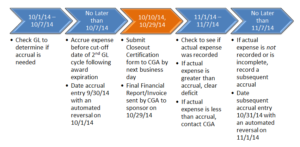One of the single most frustrating things about working in Product Development is determining how to prioritize functionality while maximizing impact to users. This is particularly important when developing a new product or a new product line. The Sales and Marketing teams are hustling to sell and promote your product before you have even finished the proof of concept and now comes the real pressure – What is the Minimum Viable Product and when does the customer expect delivery? This critical question can make or break your product and a well developed Go-to-Market strategy can help you answer these questions.
In a competitive market, planning the first release of a new product can be both frustrating and exhilarating. It is the time to make a name for yourself and for your team, but it can also be the time where you sink the product and your reputation if you do not plan, have a comprehensive Go-to-Market strategy, and know and manage your customer’s expectations.

What is a “Go-to-Market Strategy” and how does it benefit Product Management and Product Development? Understanding the market and the competitive landscape of a new product is critical to the successful launch and customer adoption of a new product. The Go-to-Market strategy is the blueprint for the new product containing information such as:
What are you selling? Understanding what you are selling establishes the ground work for communicating to your team what you are building and the value proposition of the product to your customers.
Who is your target customer? Who needs this product? Who will benefit from using this product? These questions lead you to your target customer. Your target customer should have an immediate need for the product and be able to leverage the value delivered by your product.
Who is the buyer? The buyer is your strategic partner throughout the development of the product. What are their pain points? What problems do they have that your product will help solve? This is the person that you are in constant communication and negotiation with from concept to completion.
Who are your competitors and what is the status of their products? This question is too often an after thought leading companies to develop products that are either not relevant or are delivered too late to market resulting in poor adoption rates.
Developing a new product without a well planned Go-to-Market strategy is like launching a business without a business plan. It doesn’t work. The Go-to-Market strategy is the rudder that steers the ship in the right direction. Developing and launching a new product is a resource intensive endeavor and there needs to be a strategy supporting the decisions that are made. This is particularly important in the planning stages of product development.
The biggest risk of not having a Go-to-Market strategy is that you and your team may be spending a lot of time and effort developing a product that nobody wants or needs. Identifying the target customer and engaging with the right buyer who is understands the customer’s business processes, needs and pain points is critical. The buyer must also be empowered to make the tough decisions such as what functionality is needed by the customer and when the functionality is needed.

The goal of any Go-to-Market strategy is to get the product in the customer’s hands immediately, so that real-time feedback can be collected to 1) verify that what was built is what the customer wanted/needed and 2) ensure that the product is continuously improved to maintain competitive advantage. Every customer that I have worked with wants 100% functionality on launch day and we all know that this is both impractical and fraught with pitfalls. This is where a skilled negotiator is needed to work closely with the customer’s buyer to fully understand the customer’s goals and objectives, priorities, and timeline. Based on a complete understanding of these items, negotiations can begin on what encompasses the Release 1 Minimum Viable Product. In other words, what functionality does the customer need on day 1 after production deployment versus what is needed on day 30 after a production deployment. This information needs to be discussed and documented in the Go-to-Market strategy and used by the Product Management and Product Development teams as a blueprint for developing and deploying the new product.
Originally published on LinkedIn:
https://www.linkedin.com/pulse/case-strong-go-to-market-strategy-new-product-todd-berry-pmp-csm/
